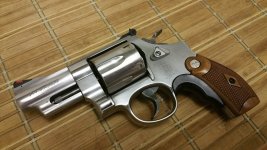One procedure that I understand is designed into nearly all self-defense training for semiautomatic pistols is what is phrased as "double tap." Having used only revolvers and not having participated in any formal self-defense training program, I am not certain I am correct in describing double tap as [in self-defense situation] firing two nearly simultaneous targeted shots when shooter achieves his desired sight picture.
If I described it accurately, this is the way marginally adequate semiautomatic pistol self-defense ammunition metamorphoses to adequacy? Wouldn't this double tap procedure achieve similar result with 38 Special ammunition?
If I described it accurately, this is the way marginally adequate semiautomatic pistol self-defense ammunition metamorphoses to adequacy? Wouldn't this double tap procedure achieve similar result with 38 Special ammunition?

